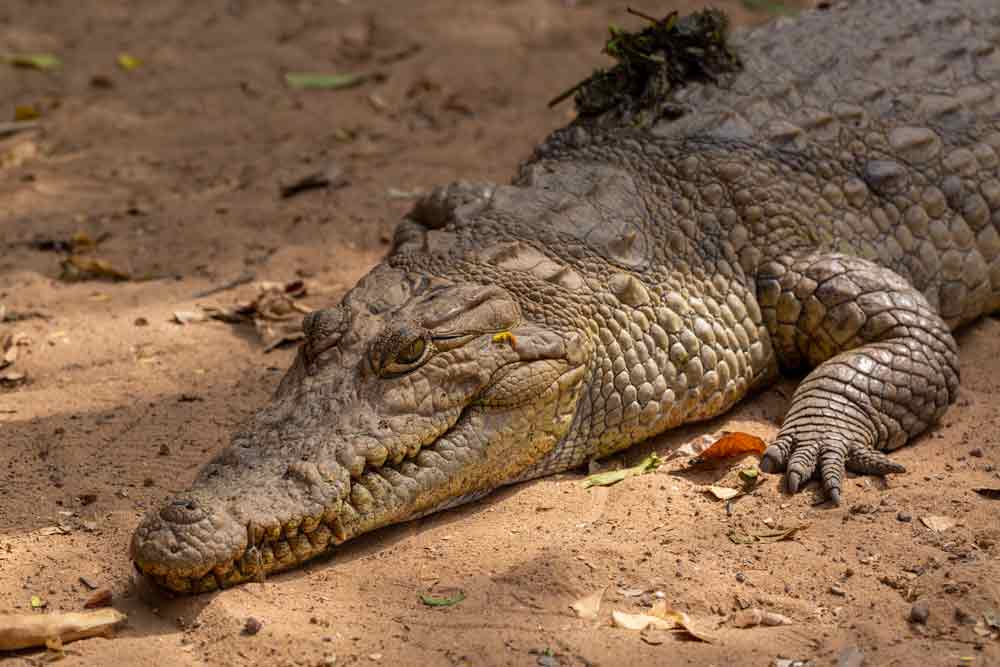
Voay is an defunct rubric of crocodile from Madagascar that lived during the Late Pleistocene to Holocene, containing only one species,V. robustus. multitudinous subfossils have been set up, including complete craniums , noted for their distinctive brace of cornucopias on the posterior, as well as chines and osteoderms from similar places as Ambolisatra and Antsirabe. The rubric is allowed to have come defunct fairly lately. It has been suggested to have faded in the extermination event that wiped out much of the aboriginal megafauna on Madagascar, similar as the giant raspberry and Malagasy hippo, following the appearance of humans to Madagascar around 2000 times agone . Its name comes from the Malagasy word for crocodile.
One unusual point of V. robustus that distinguishes it from other crocodilians is the presence of prominent” cornucopias” extending from the posterior portion of the cranium. They’re actually the posterolaterally extended corners of the squamosal bone. Other affiliated crocodilians similar as Aldabrachampsus also had analogous bony protrusions, although in Aldabrachampsus these protrusions were more like ridges than cornucopias. Another individual specific is the near– rejection of the nasals from the external naris. It had a shorter and deeper conk than the extant Crocodylus niloticus, as well as fairly robust branches. The osteoderms had altitudinous vessels and were dorsally symmetrical with twisted side perimeters, running the entire length of the postcranial body.(
robustus has been estimated to have attained lengths up to 5 m(16.4 ft) and a weight of 170 kg( 375 lbs).( These estimates suggest thatV. robustus was the largest bloodsucker to have was in Madagascar in recent times. Its size, elevation, and presumed geste is analogous to the ultramodern Nile crocodile( Crocodylus niloticus). BecauseV. robustus participated so numerous parallels with the Nile crocodile there must have been a great deal of interspecific competition for coffers between the two crocodile rubrics if they were to have accompanied with one another. It has lately been proposed that the Nile crocodile only migrated to the islet from landmass Africa afterV. robustus had come defunct in Madagascar. still, this was latterly rebutted after some Crocodylus samples from Madagascar were set up to be over 7,000 times old and simultaneous with Voay.
ADS
Phylogenetics
WhenV. robustus was first described in 1872, it was firstly assigned to the rubric Crocodylus. It was latterly set up to morphologically have had more in common with the extant Osteolaemus, or dwarf crocodile, than Crocodylus. Some features it participated with Osteolaemus include a depressed pterygoid face that forms a choanal” neck” on the palate. Because it wasn’t close enough to be placed in the same rubric as the dwarf crocodile, it was assigned to the new rubric in 2007. Before this reassignment, the species was considered by some to be synonymous with Crocodylus niloticus. still, this was most probably due to a misapprehension of remains from the livingC. niloticus withV. robustus and the poor description of the original material from which the species was described. In discrepancy to the morphological parallels with Osteolaemus, a 2021 study using paleogenomics set up Voay to be a family group to Crocodylus, with both rubrics diverging in themid-late Oligocene; this indicates that the apparent parallels with Osteolaemus are probably due to coincident elaboration.
ADS


